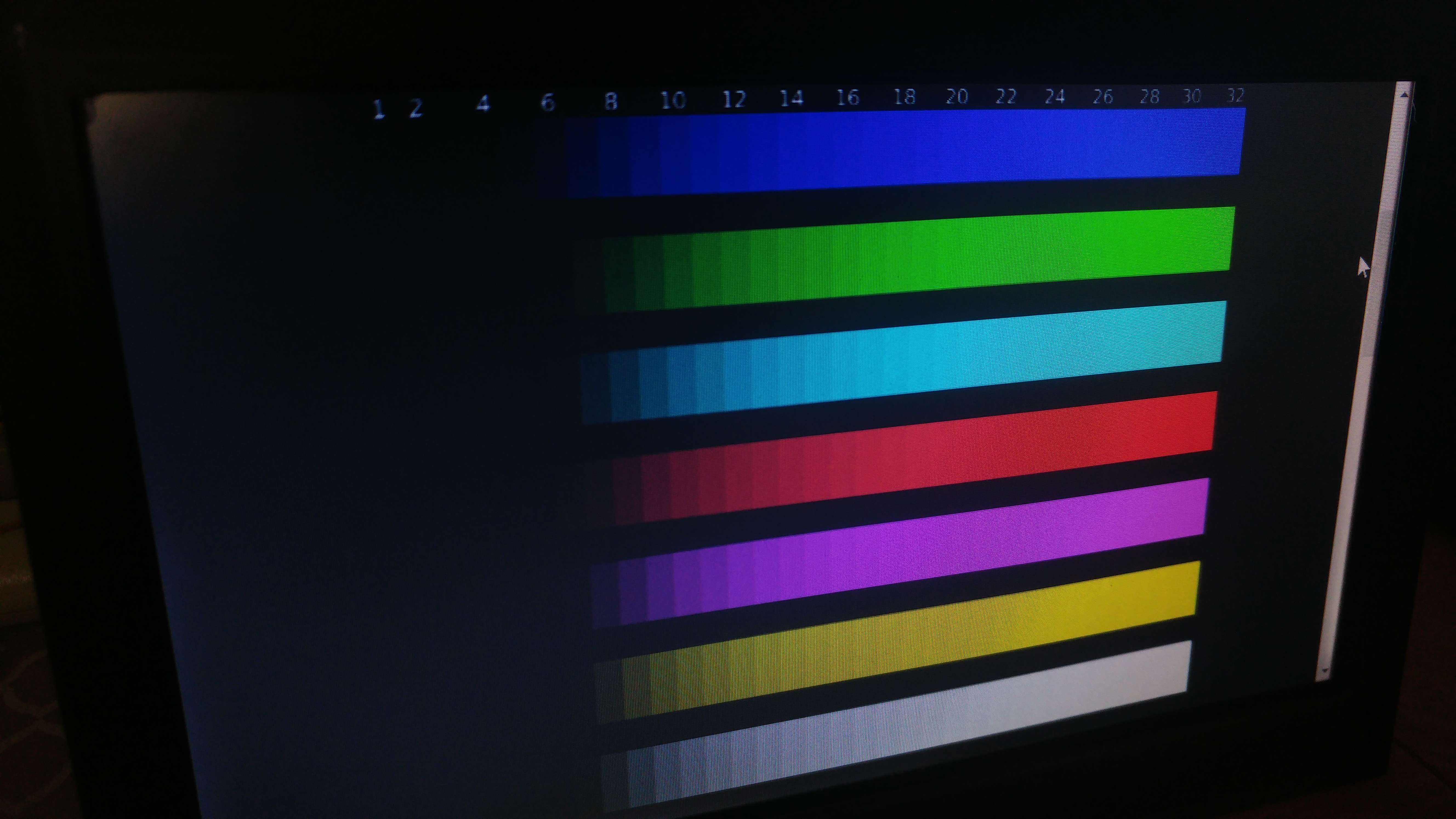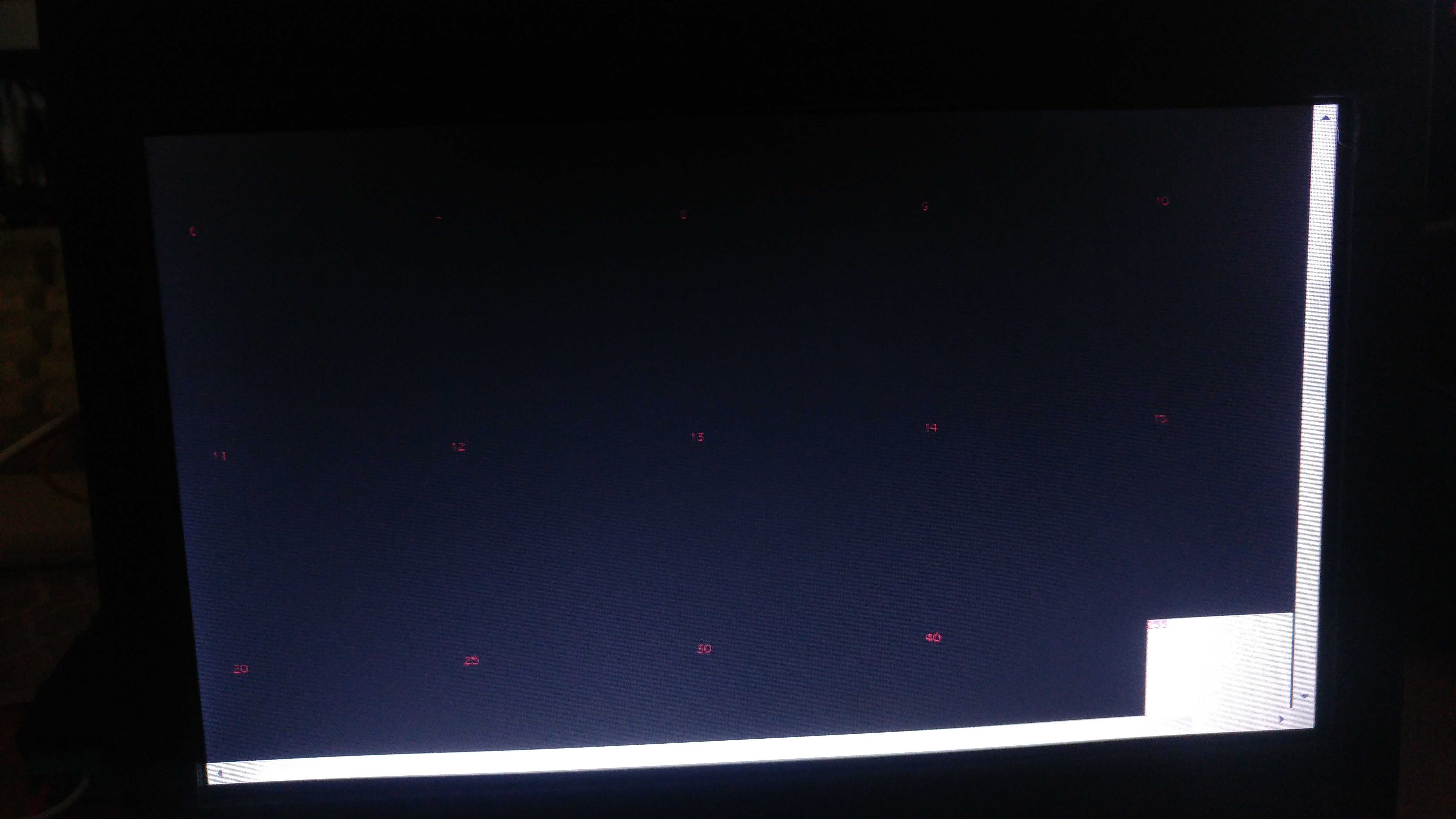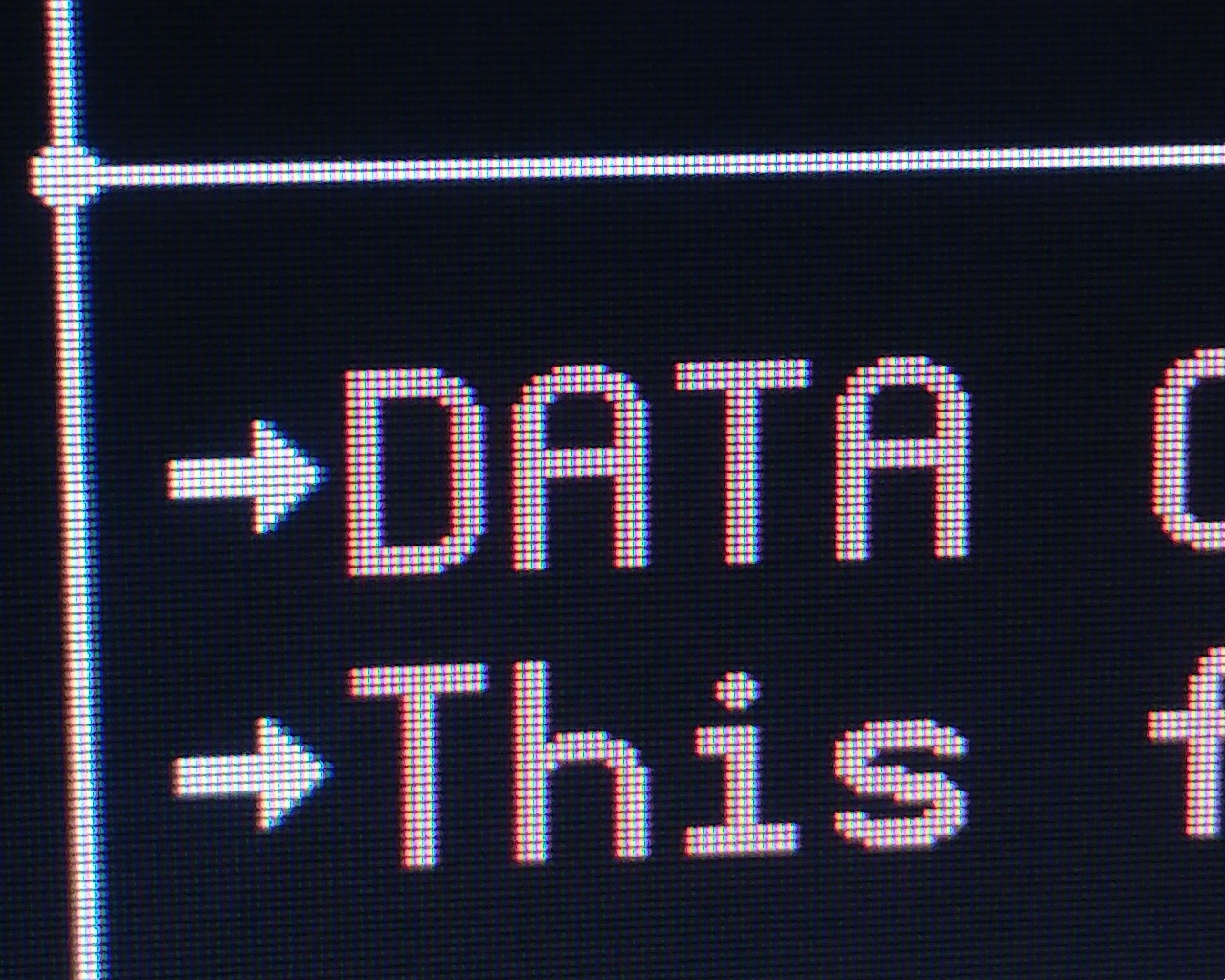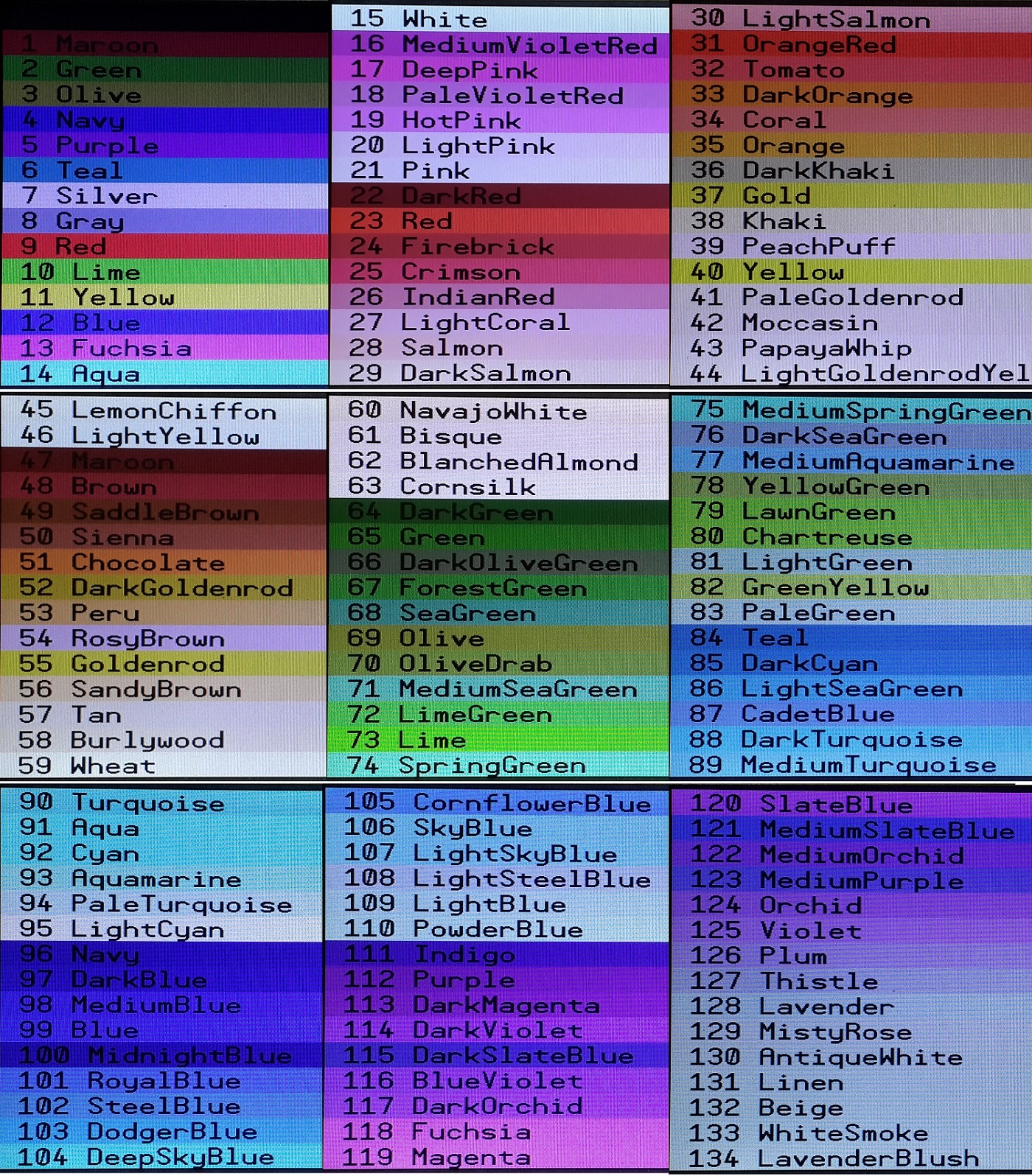About those HDMI screens...
 Wuerfel_21
Posts: 5,720
Wuerfel_21
Posts: 5,720
Does anyone else think they kinda suck? Now, I managed to charm myself to a freebie (not from Parallax themselves), but I'd be upset if I'd have paid for it. The color reproduction is beyond jape. Absolute garbage. Now, I get that Parallax just resells these, but like, come on.

It literally doesn't display anything darker than ~ level 45. It's a little bit better if I set my PC to limited range, oddly enough (full range out from the P2 seems to be okay though???).
Perplexed at how something this crust was ever manufactured, I figured that the driver board is supposed to come with a little button PCB to allow access to an OSD. For some highly stupid reason, the version Parallax sells doesn't even have the connector for that populated. Luckily it still works though, if you poke a wire through the GND pad and touch the other end to the button pads.
The pinout is as follows from the top / side with the HDMI port:
- 5V (!!)
- GND
- IR input(what codes would it use????)
- Power button
- Menu button
- + Button
- - Button
- Source select (does nothing except exit out of menus)
- some sort of LED connection?
- another LED connection?
With this knowledge, the OSD can be used to very slowly adjust the picture.
These are the values I painstakingly settled at. They don't solve all the color issues completely, but a lot better than the defaults for sure!
Color
- Brightness: 70
- Contrast: 30
- Hue: 50
- Saturation: 58
- Color Temp: User
- Red: 128
- Green: 114
- Blue: 100
OSD
- OSD Timeout: Off (set this first, it will save your sanity)
- Transparent: 3
Function
- Display Ratio: 16:9 (4:3 also works, but Auto is broken
 )
) - Sharpness: 0 (I don't think this actually does anything? Image is always slightly blurred regardless)
- Mode: SYS3 (try the other values if you want to mirror/flip the display)
Issues that I can't seem to fix
Aspect ratio. The Auto setting that would be ideal doesn't work (it scales 4:3 inputs to 3:4, yuck)

Sharpness. For some reason the display slightly messes up the image even when driven at the native resolution. See how there's a gray pixel to the right of every white pixel? That is definitely not part of the signal. Since it happens regardless of settings and the image seems otherwise pixel-perfect, this may be a hardware issue where the DAC in the LCD panel itself is to blame.

Low contrast ratio / high light bleed. That's just the cheap panel, nothing to be done about that. Even the cheapie NTSC monitors seem to have higher quality panels.
- Gamma. Seems very low.


Comments
Nice! Never occurred to me that this thing had an OSD.
Are you saying the connector is on the back side of the PCB? If so, looks like could just pull board off of foam pads and glue back on later...
Any idea what J5 and J6 on the side are for?
Quality looked pretty decent to me. But, I didn't look very closely at that...
J6 is the connector for the buttons as described above. J5 is apparently for flashing firmware, but I can't find anywhere to acquire firmware for this particular controller board (apparently called "PCB-800168" ).
For reference, the button board hooked up apparently looks like this

There's manual here: https://usermanual.wiki/Pdf/ERVB800168Datasheet.1273732525/html
"It literally doesn't display anything darker than ~ level 45. It's a little bit better if I set my PC to limited range, oddly enough (full range out from the P2 seems to be okay though???)."
So when driven by P2 you can see more levels than when driven by a PC?
My 4k TVs that I use for monitors have what is probably considered "image enhancement" hardware that can't be turned off. They exaggerate contrast, making small text very hard to read. I found that if I drop to 2560x1440 mode, they get to do their unstoppable thing, but it's not so bad, because the dither is needed, since it has to remap to the 3840x2160 screen pixels. All this stuff seems broken today, due to overprocessing, alone.
With TVs these are the usual tricks to get them to behave:
Oddly enough, yes. Maybe it just thinks that "HDMI info packets == limited range" and "pure DVI == full range"? Or maybe the nvidia driver is just having a normal one again, idk.
I think I'm using the same display panel (or a near relative) but with a VGA driver board (not an HDMI one). I could but haven't as yet modified its default color settings, but maybe I should try that based on the first post, as I've noticed that there's not much, if any, difference between lots of colors (though I need to check if this screen/board combo is 18 or 24 bpp). I replaced the palette in Eric's video driver with named colors from the web and programmatically displayed them (colors are in color groups, such as blues, greens, whites, etc, except for the first 16 colors). Then I took photos of them with my phone. My phone hasn't captured the colors faithfully, but what concerns me is how many colors look similar or the same on the LCD panels themselves, particularly with the brighter colors and off-white ones. Still, overall, there are lots of colors to choose from. Attached is a composite image from 9 different screen shots showing the colors.

Is it just the photo or do all the really bright ones come out the same (such as 129 through 134, 118 and 119, 41 through 44)? Then yea that's not right. Ideally, try setting a palette of all 256 grays and then do the same test. This will make it easy to tell if and where the levels are clipping.
With analog inputs, having to mess with the levels is kindof expected, but there is absolutely no excuse for even having level controls on HDMI to begin with (besides limited/full range override). There is exactly one right way to display a digital signal, why is this so hard?
Yeah, the really bright colors come out the same. And it's worse than in my previous post, as I inadvertently left off some of the whites. Below are the rest of the whites juxtaposed with those from the above-referenced webpage (meaning a photo butted up against a screen shot). Thanks for the suggestion about doing testing with a gray scale. Incidentally, my goal was to let the user (me) choose web colors using named constants, which I implemented. But then I noticed that I wasn't getting as rich a variety of colors as on the web. And your post reminded me of the issue (though I'm using analog VGA, as you said, not end-to-end digital) Anyway, if I discover anything new, I will try to provide an update. Thanks for your comments and for the suggestion, as well as for your well-documented thread.
